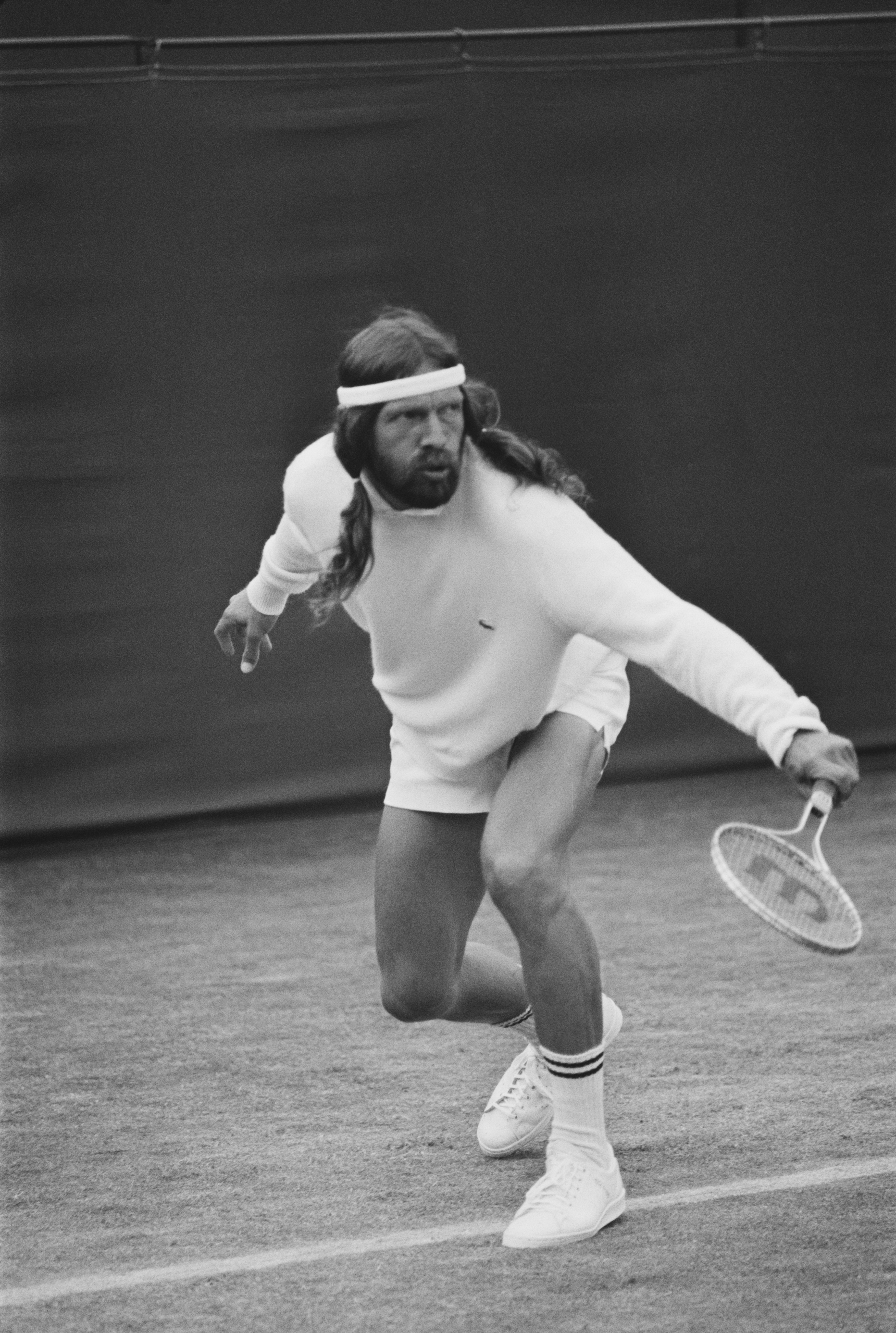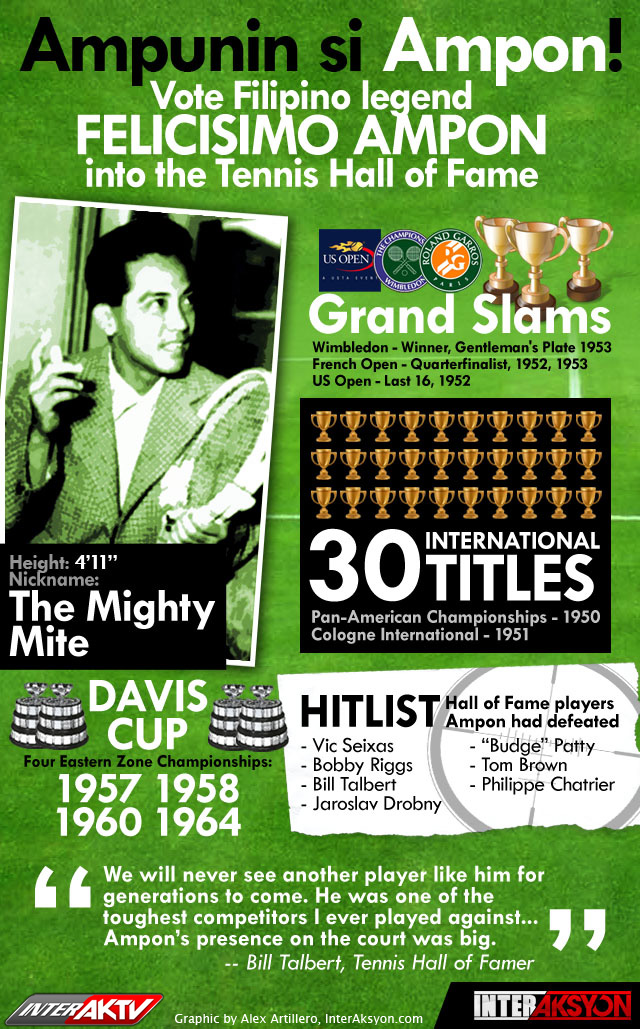“A flyweight mini-man, who handled a tennis ball with such class and elegance…”. This is how Danish tennis legend Torben Ulrich (born 1928) describes Filipino tennis wonder Felicisimo Ampon during an exclusive interview with Tennisavisen
Ampon, whose heyday was in mid-20th century, seems to have gone into oblivion. However, through Torben Ulrich’s anecdotes, the Filipino tennis legend’s era is revisited.
Felicisimo, also known as “Totoy”, was considered a national hero in Philippine tennis since the 1940s. He was also considered one of the world’s best tennis players of his time, despite a modest 5-foot stature. He was born on the 27th of October 1920, about forty miles outside Manila.
Ampon’s tennis career gained real traction when he won the singles gold medal at the 1934 Far Eastern Games, which is considered the forerunner of today’s Asian Games. In 1937, his team won the Davis Cup title, making Felicisimo Ampon the first and, so far, the only Filipino to win a Davis Cup tournament.
Within the two following decades, he sat firmly on the Asian tennis throne, which was even further cemented when he joined forces with fellow Filipino countryman, Raymondo Deyro, who became his doubles partner during the 50s.
“It was already in the early years after the war I became acquainted with Ampon. As I have gotten to know him both on- and off-court, I would say that he was a really great guy” says Torben Ulrich.
After World War Two, Ampon again made history in 1948 by winning the Wimbledon Plate Championship, which is a trophy given to the winner of a parallel tournament between those players who were defeated in the first or second round of Wimbledon. During the same year, Ampon won the Copenhagen Ball Club (K.B.) International Outdoor Championship in Copenhagen, Denmark, and later became the Singles Champion at the 1951 Swedish Hard Court Championship, where he defeated his doubles partner, Deyro.
In 1952, Ampon reached the quarterfinals at Paris Open at the Roland-Garros, where Australian Frank Sedgman, who was ranked as world’s number one at the time, defeated him.
Ampon and Deyro were the type of players who volleyed effortlessly. Ampon, in particular, played strategically and consistently. “The way I remember it, he had a free-flowing forehand and really was generally a strong all-court player”, says Torben Ulrich.
Through his enthralling and vivid storytelling, Ulrich reveals that the Filipino double team often went for the net at their earliest opportunity, either on the 1st or 2nd serve, as it was unthinkable to stay behind the baseline back in the 40s.
Notably, these were also the tactics that Jan Lesly repeatedly employed to clobber the Danish tennis duo, Kurt Nielsen and Torben Ulrich.
“When you look at how it went, it was not until 1958 that the times had really begun to change for professional tennis. Ampon and Deyro could travel Europe and play on tennis tournaments all summer with full support from the Philippine Tennis Association, whereas Kurt Nielsen and I were obliged to follow the rules of The Olympic Games and of The Danish Tennis Association (DTU), which meant that we could only travel 21 days without applying for exemption for each tournament, says Torben Ulrich.”
Soon, however, Torben Ulrich took up the fight and started traveling as a journalist, so he could bypass travel limitations. During these travels, he played both tennis and wrote jazz music simultaneously. During that time, Felicisimo Ampon was playing in many of the tournaments where Torben Ulrich played.
Torben Ulrich particularly remember his last match against Felicisimo Ampon one summer in the 1970s held at Ampon’s hometown in the Philippines under The Grand Masters umbrella. Here, even in his late 50s, the Filipino tennis legend could still play a convincing exhibition match.
“Some people change as the years go by, others don’t — Felicisimo Ampon was the latter. After all these years, Ampon was still himself, something I was pleased to learn during our reunion,” says Torben Ulrich.
Philippine Tennis Ambassador
Felicisimo Ampon participated in the Davis Cup until he was 47 years old, earning him the title of oldest active player in the Davis Cup ever. At that time, age was not an issue for the Filipino world star.
In fact, he was still actively participating in tournaments throughout Europe, Asia and the USA. He won 30 European trophies and had defeated many of 20th century’s top tennis players, including Wimbledon Champion Jaroslav Drobny.
With the many victories during his heyday, Felicisimo Ampon managed to solidly put the Philippines on the world tennis map. As a result, the Philippine Sportswriters Association (PSA) praised him for his extraordinary tennis skills and hailed him as Athlete of the Year in 1950.
“Both Deyro and Ampon were fine ambassadors of the Philippines, and I remember Felicisimo who played in white long flannels, which my father and everyone else at Wimbledon also wore back in the day” says Torben Ulrich.
In September 2007, Felicisimo Ampon was added to the esteemed group of thirty-six magnificent Filipino athletes who were awarded a place in the Far Eastern University’s Sports Hall of Fame in Manila, Philippines. Felicisimo Ampon passed away in 1997.






















































